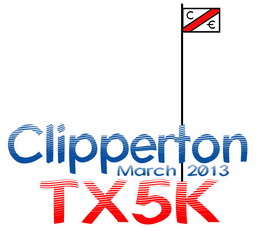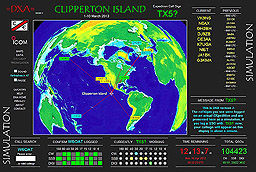|
We are pleased to announce... |
|

Jean Morschel is a Geographer and assistant professor at the University of the French Polynesia. He works on landscape analysis, hydrous dynamics and erosion risk. His favourite fieldwork projects have been in central Tunisia (2002 – 2006), the Camargue region (delta of the Rhône, France – 2007 – 2011) and in Mongolia (2010). He combines his work with his passion for travel, but also enjoys surfing, snorkelling and Argentinian Tango.
Jean was a participant in the 2012 The Clipperton Project, organized and led by Jonathon Bonfiglio (www.clippertonproject.org). Here is a summary of the work he did on his visit to Clipperton in March, 2012 (source: http://www.clippertonproject.com/jean-morschel-research).
--------------------------------------------------------------------------------------------------------------------
FRI 06/04/2012 UPDATE: RESEARCH AIMS – Jean Morschel
Goal:
To identify the plant coverage and shore line changes and the effects caused by external activities or environmental conditions on the island.
Description:
The geographical research conducted by Geographer Jean Morschel, of the University of French Polynesia, on Clipperton Atoll during March 2012 has enabled the collection of two separate data sets.
First a complete topography of the old passage of the atoll, near the rock, then a cartographic inventory of the vegetation on the island. After treatment, to format them in a Geographic Information System, and comparative analysis with older data, the data collected should enable him:
- To estimate of the current dynamics of the old passage in order to answer the question: is it going to re-open its course, to close further, or will there be a stability in this regard? To address this issue, a longitudinal study to compare the topographic limits of the current passage with those observed at earlier dates (using aerial or satellite images, for example), will be implemented.
- To analyze the spatial dynamics of vegetation, in order to identify whether the area covered by plants will increase, decrease or remain stable. Again, treatments will be implemented for this analysis, based on comparative analysis between data collected in March 2012 with previous remote sensing data.
Methodology:
Concerning the changes in the old water path, the implemented method consists in the topographic survey of the shoreline. The collected data, using a Trupulse 360b telemeter, allows an accuracy drawing of the current shoreline that can be compared with remote sensing data from the past. The expected results are to have an idea of the current dynamics of the water path, such as if it will re-open, close further or remain stable.
Concerning the vegetation dynamics, the method consists in the identifying of the different species of plants presents on the island and in the GPS mapping of them. The map will be compare with remote sensing data of the past to obtain the map of the vegetation dynamics. If it is possible, the spatial extension and the dynamics of the vegetation will be compared with the current animal life of the island, like the crabs and the rat populations, to try to determine the impact on the vegetal life.
Results:
The data are currently being analysed.
FRI 16/03/2012 UPDATE: The survey of Clipperton Island has been successfully completed!
MON 12/03/2012 UPDATE: Jean Morschel has now fully mapped the area around the rock and is rapidly moving his way across the rest of the island.
-------------------------------------------------------------------------------------------------------------------
Jean Morschel
Associate Professor in Geography
Université de la Polynésie française,
Faa’a, Tahiti, Polynésie française
|
||||
Copyright © 2012 Robert W. Schmieder All rights reseved. Last update:
|


